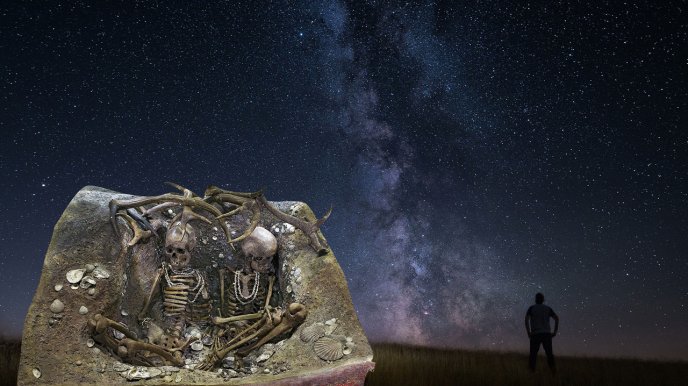How did prehistoric societies think about death? What meanings did they attribute to the bodies of the deceased, to the gestures that accompanied them, and to the spaces in which they lay? This symposium will explore the diversity of mortuary practices from the Palaeolithic to the Neolithic, whether funerary, ritual or violent, through the material traces of the treatment of bodies - burials, manipulated human remains, cutting marks, secondary deposits, trophy collections.
The challenge is twofold: firstly, to reconstruct the gestures involved - burials, displays, decarnations, ritual and non-ritual cannibalism - and secondly, to understand the symbolic and social logics that underlie them. We will also examine the limits of ritual interpretation: in certain contexts, cannibalized bodies could be simply food or evidence of violence and aggression between groups. Nevertheless, these practices offer invaluable access to the mental universe of societies without writing, far removed in time from our own, but rich in symbolic expression. Conceptions of the body, identity and ties to the dead were profoundly different from those prevailing in contemporary societies, where death tends to be distanced from everyday life.
Taking an interdisciplinary approach involving archaeology, Paleoanthropology, taphonomy and mythology, this symposium will examine the way in which death-related gestures contribute to the elaboration of systems of representation, even beyond individual disappearance. By investing the materiality of the remains of the deceased, the living construct myths, memories and allegiances - all narratives of which we now perceive only fragmentary traces, but always charged with meaning.

